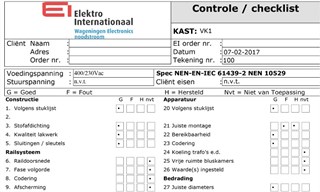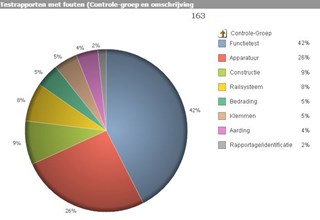Efficient production through automated test report
ingevoerd op 02-06-2017
Elektro Internationaal does the utmost to make internal processes as efficient as possible. Better processes lead to better products. With this in mind we have developed a module for generating automated test reports.
When you order a panel from Elektro Internationaal, all information known to us is entered into our project system (Syntess Atrium). A template is then automatically created for the final test report (which will be delivered to you with the end product). All customer information gets imported from Syntess and automatically placed in the template. At the same time the report is linked to one of the project managers.
Comments during production
The report can be called on screen of a pc or tablet at any given time for adding comments on the progress of the project. This is made particularly easy by the user friendly format of PDFill, in which the report is made up. Even during assembly our mechanics can add comments regarding problems with materials or schematics. These comments can be viewed by the project managers who are kept abreast of new entries in the report via automated emails. This way they can take proactive steps to ensure a smooth production process. They can also use the information to learn for future similar projects.
Clear visuals in Qlikview
During testing the tester opens the report on his pc and addresses every item that must checked according to the European standard for panel building (NEN-EN-IEC61439). Behind every checkbox there’s a fold out with more specific test parts. The information entered into this form is then imported in Qlikview: specialized software that gives insight into processes. There the information from the test reports is converted into clear charts and graphs that make a wide scope of information visible for interpretation. For instance how many panels have been tested before being delivered to the customer, what type of production errors were made and which of those occur most frequently. We can also gain insight into which errors were spotted and rectified before testing, the number of minutes used on repairs and the costs. Even which mechanic makes which type of mistakes. If there appears to be a trend, steps can be taken to reduce errors and costs and further shorten lead time. This way we can guarantee the best quality and a speedy delivery!
 Testrapport1
Testrapport1
 Testrapport
Testrapport